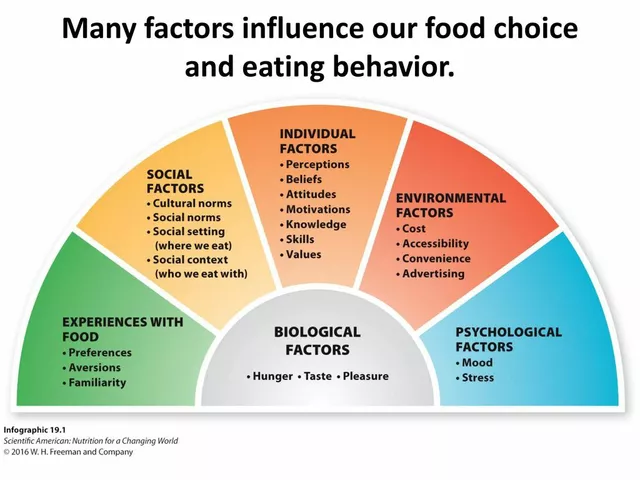Federal Deficit Hits $2 Trillion as Real-Time Trackers Reveal Spending Chaos Amid Shutdown Fallout
By late August 2025, the U.S. federal government had already racked up a $2.0 trillion deficit for fiscal year 2025 — a figure that sent shockwaves through Washington and beyond. Not because it was unprecedented — though it was close — but because real-time budget trackers from The Hamilton Project, The Brookings Institution, and The Bipartisan Policy Center showed just how erratic and unpredictable spending had become. For the first time, the public could watch the deficit climb like a stock ticker, day by day, with alarming precision. And what they saw wasn’t just numbers. It was dysfunction.
How the Trackers Work — and Why They Matter
These tools aren’t fancy dashboards for wonks. They’re digital lifelines. The Hamilton Project updates its tracker daily at 4 p.m. ET, pulling raw data from U.S. Treasury’s Bureau of the Fiscal Service. The Brookings Institution runs an identical system. Meanwhile, the Wharton Budget Model tracks daily cash inflows and outflows — receipts, payments, everything — with granularity that even some congressional staffers didn’t know existed.
What makes these trackers revolutionary isn’t just their speed. It’s their transparency. For years, budget data arrived weeks late, buried in PDFs. Now, anyone with internet access can see that in August 2025, the deficit was $272 billion — 9% lower than August 2024 — yet total monthly spending was $9 billion higher. That’s the twist: the government spent more, collected more in taxes, and still ran a bigger deficit than last year. Why? Because obligations piled up faster than revenue could keep pace.
The Shutdown That Broke the System
The government shutdown that began in late September 2025 lasted 43 days — the longest since 2018. It wasn’t about border walls or Obamacare. It was about who controls the money. When the Committee for a Responsible Federal Budget released its November 13 update, it confirmed the shutdown ended on November 12, 2025, after Congress passed a stopgap funding bill. But the deal was messy: full-year appropriations for Agriculture, Military Construction and Veterans Affairs, and the Legislative Branch. Everything else? Funded only through January 30, 2026.
That’s not a solution. It’s a reprieve. And it’s why the Hamilton Project and Brookings issued a rare joint warning: "The Trump administration’s conduct and statements with regard to spending freezes and impoundment, including the Department of Government Efficiency’s (DOGE) activities, have created uncertainty as to whether or not funding is flowing through Treasury’s Bureau of the Fiscal Service to particular programs, agencies, and departments in accordance with the law."
That’s not political rhetoric. It’s a legal red flag. DOGE — a newly empowered office within the Executive Office of the President — began quietly halting transfers to agencies it deemed "inefficient." No congressional approval. No public notice. Just a memo. And with no legal precedent for such unilateral action, agencies were left guessing whether their grants would clear. Some payroll systems froze. Research labs shut down. Veterans’ benefits were delayed.
What the Numbers Really Show
The deficit trajectory tells a story of accelerating debt, not just spending:
- End of May 2025: $1.4 trillion deficit — 7% higher than 2024
- End of June 2025: $1.3 trillion — 1% lower than 2024
- End of July 2025: $1.6 trillion — 2% higher than 2024
- End of August 2025: $2.0 trillion — 1% higher than 2024 (after timing adjustments)
Notice the jump between July and August? That’s not seasonal. That’s systemic. The Congressional Budget Office’s February 2025 projection — that the deficit would hit $2.7 trillion by 2035 — now looks conservative. The CBO also estimated the deficit would be 6.2% of GDP in 2025, dropping to 5.2% by 2027. But with the current trajectory, that drop won’t happen. Interest payments alone are eating up 18% of all federal revenue — more than defense.
Who’s Watching — and What They’re Seeing
It’s not just think tanks. Bloomberg Government launched its "Federal Funding Flow" platform, the only tool that connects congressional appropriations to actual spending outcomes. Meanwhile, the American Institute of Physics FYI keeps a real-time tracker on science funding — and found that NASA, NSF, and DOE programs faced delays of up to 90 days during the shutdown. Some grants expired before they could be awarded.
The numbers are stark: the President’s FY 2026 budget request was $1.45 trillion. The Senate and House both approved $1.606 trillion. The final enacted FY 2025 funding? $1.600 trillion. But the House’s interim FY 2026 allocation? $1.598 trillion. That’s nearly $150 billion more than the President asked for — and yet, no one knows if it’ll actually be spent. Because of DOGE’s shadow freezes, agencies are sitting on unspent cash, afraid to disburse it.
What Happens After January 30, 2026?
That’s the ticking clock. By late January, the remaining 80% of federal agencies will run out of temporary funding. If Congress hasn’t passed full-year appropriations by then — and given the partisan gridlock, that’s a big if — we’re looking at another shutdown. Or worse: a constitutional crisis. If DOGE continues to impound funds without legal authority, courts may be forced to intervene. The Treasury Department, caught between the White House and Congress, is already quietly preparing contingency plans.
The real danger isn’t the $2 trillion deficit. It’s that no one — not even the people who manage the money — can say with certainty where it’s going. The trackers have exposed the illusion of control. And now, the public is watching.
Frequently Asked Questions
Why is the deficit higher in August 2025 even though the monthly deficit was lower than in 2024?
Though August 2025’s monthly deficit ($272B) was 9% lower than August 2024, the cumulative deficit for the fiscal year had already ballooned to $2.0 trillion by then — up 1% from the same point in 2024. That’s because earlier months saw higher spending, particularly in June and July, and tax receipts didn’t keep pace. The August dip was a temporary correction, not a reversal of trend.
What is DOGE, and why is it causing concern among budget experts?
DOGE — the Department of Government Efficiency — is an executive office created under the Trump administration to identify and cut "wasteful" spending. But unlike traditional budget offices, DOGE has been unilaterally freezing transfers to agencies without congressional approval. Experts warn this violates the Appropriations Clause of the Constitution, which gives Congress sole power over federal spending. The Treasury has confirmed it’s receiving conflicting directives, creating chaos in fund disbursement.
How do these real-time trackers differ from traditional budget reports?
Traditional reports like the President’s Budget or CBO projections are estimates based on assumptions. These trackers use live Treasury data — actual cash inflows and outflows — updated daily. They show what’s really happening, not what was planned. For example, they revealed that $38 billion in planned education grants were never disbursed in Q3 2025, even though Congress approved them — a gap invisible in official documents.
What’s the risk if Congress doesn’t pass full-year funding by January 30, 2026?
Without new funding, over 80% of federal agencies — including the IRS, CDC, FAA, and Social Security Administration — will face operational shutdowns. But the bigger risk is legal: if DOGE continues to withhold funds, courts may rule those actions unconstitutional. Agencies could be forced to stop paying contractors, furlough workers, or cancel vital services — all without any new law authorizing it.
Why do these trackers exclude Public Debt Cash Redemptions?
Public debt redemptions — when the government pays back maturing bonds — are not spending. They’re financial transactions, like paying off a credit card. Including them would distort the true picture of how much the government is spending on programs, services, and salaries. The trackers focus on outlays that reflect current fiscal policy, not debt management.
Can ordinary citizens use these budget trackers to hold officials accountable?
Absolutely. The Hamilton Project and Brookings tools let users compare spending by agency, program, or year. A parent in Ohio can see if their state’s education grants are delayed. A veteran in Florida can track VA funding. This transparency turns abstract deficits into personal stakes — and empowers voters to demand answers when the numbers don’t add up.
- November 26, 2025
- Cassius Windham
- 0 Comments
- Permalink




